Worcestershire Archaeology has produced numerous research publications and thousands of site reports, resulting from 30 years’ worth of projects in the Midlands and beyond. Reports are produced for all of our work, from small watching briefs to large excavations. Many of these are available online, but if you are looking for a report that is not available digitally, please email us.
Our recent report library
All our digital reports are freely available via the Archaeology Data Service, where you can search through them by title, location and time period. Please get in touch if you can’t find what you’re looking for.
Worcestershire Research Report Series
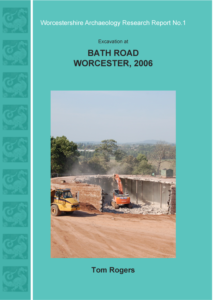
Report 1-Excavation at Bath Road, Worcester, 2006
Excavations in 2006 at the World War II petrol storage facility on Bath Road, Worcester uncovered evidence of a blade-making industry of Mesolithic or early Neolithic date, and a small rural settlement spanning the transition from the Iron Age into the Roman period. It is one of a number of such sites in the hinterland of Worcester.
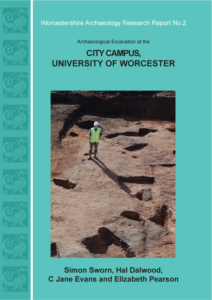
Report 2- Archaeological excavation at the City Campus, University of Worcester
Before being developed by the University of Worcester, the site of Worcester Royal Infirmary was investigated between 2007–2012. Dating from the Roman period, the evidence is of marginal activity on the edge of the town, followed by a build up of tillage soils from centuries of horticultural use. In the 18thc the area was taken over by the Royal Infirmary and remains and artefacts relating to medical practices in the hospital were found.
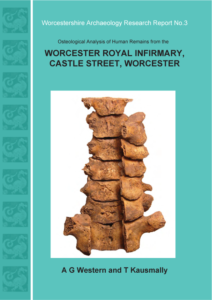
A watching brief carried out during March 2009 and June 2010 at the site of the former Worcester Royal Infirmary, Castle Street revealed three pits containing disarticulated human remains.
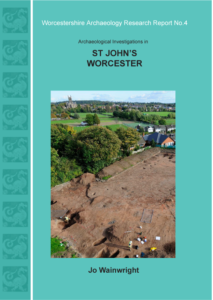
Report 4-Archaeological Investigations in St John’s, Worcester
A complex programme of archaeological works preceded the 2007–8 development in St. John’s, Worcester for Sainsbury’s Supermarkets Ltd. This report presents the most significant results including extraordinary early Roman deposits, a rare, well-dated group of very early Severn Valley ware, Iron Age remains, second century occupation, and late Roman/early post-Roman burials. Medieval ovens, and evidence for post-medieval tanning, are also described.
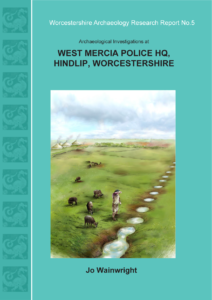
Report 5-Archaeological investigations at West Mercia Police HQ, Hindlip, Worcestershire
At West Mercia Police HQ, Hindlip, investigations in 2009 identified two areas of interest. An Iron Age pit alignment ran from east to west along the crest of the slope, following a boundary between two geological zones, a feature which has been noted in other examples of this type across the country. To the south lay a small settlement showing evidence of pastoral farming dating from the mid second to fourth centuries AD.
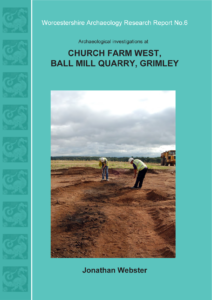
Report 6-Archaeological investigations at Church Farm West, Ball Mill Quarry, Grimley
Work over several years up till 2009, revealed and investigated a large settlement of Iron Age and Romano-British date. Four complete enclosures with associated field systems and trackways revealed mainly pastoral activity, raising or coralling cattle and other livestock. Evidence for 7th to 8thc AD activity included a sunken featured building and pottery. The site provides an insight into the changing character of habitation in this part of the Severn Valley.
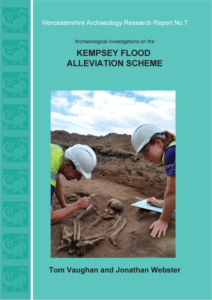
Report 7-Archaeological investigations on the Kempsey Flood Alleviation Scheme
The area to the south west of St Mary’s Church, Kempsey was a historic graveyard. Excavations in 2011 uncovered 46 complete individual burials as well as remains from up to 21 others which were removed before flood defence works went ahead. The extent of the Saxon graveyard was discovered and analysis of the skeletal remains has revealed much about the health and origins of Kempsey’s medieval community.
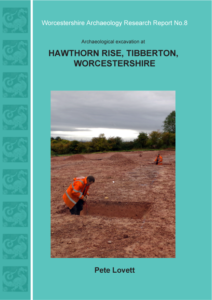
Report 8-Archaeological excavation at Hawthorn Rise, Tibberton, Worcestershire
Building at Tibberton in 2015 prompted excavation of parallel ditches and pottery dating from the Middle Iron Age. They suggest that this was a promontary fort enclosing an area of up to 4 hectares. It was closed deliberately in the Late Iron Age, with two pots buried in the top of the northern ditch. Later activity was indicated by Severn valley ware in pits cutting the earlier ditches.
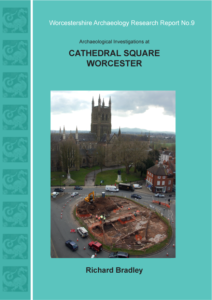
Report 9- Archaeological Investigations at Cathedral Square, Worcester
Lying in the centre of Roman and Saxon Worcester, as well as the medieval and post-medieval city, this site spanned the boundary of the Cathedral precinct and the centre of Worcester. Medieval Lich Street ran straight across the centre of the site. The 2015 excavations on the Cathedral Roundabout enabled examination of substantial structures dating from Roman to modern periods and historical research also identified ownership of many of the excavated properties.
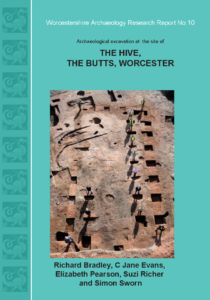
Report 10-Archaeological excavation at the site of The Hive, The Butts, Worcester
Investigations on the site of The Hive from 2008–11 revealed a very busy part of Worcester’s Roman settlement to the north of the medieval city wall. Several buildings including a large aisled building were sited alongside a road leading to the river and activity as far as the riverside was discovered. During the Civil War ditch defences were cut around the outside of the city wall. Finds included the ‘Worcester’ Roman ovens and casting moulds for cauldrons.
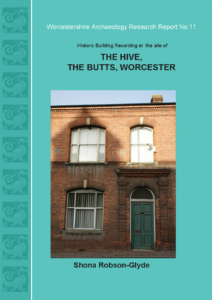
Report 11-Historic Building Recording at the site of The Hive, The Butts, Worcester
Buildings occupying the area where The Hive now stands were photographed and recorded in 2008–2009 before the majority of these were demolished. These include remains from the 18th century Netherton Estate, 19th century almshouses, many commercial premises, the offices, sawmill, engine house and timber yard belonging to Joseph Wood and Son, and an air raid shelter.
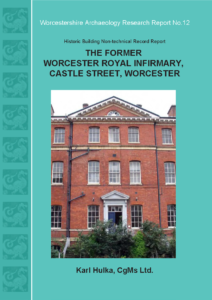
Historic buildings dating from the 18th century on the site of Worcester Royal Infirmary were recorded in 2008 before the site was redeveloped for use by the University of Worcester. Photography, description and analysis is complemented by documentary research and oral histories of former hospital staff and patients.
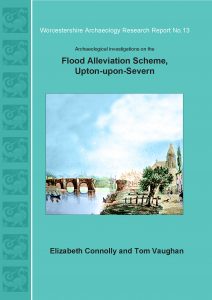
Report 13- Archaeological investigations on the Flood Alleviation Scheme, Upton-upon-Severn
Excavations during flood alleviation works in 2014 in two small areas of the affected site focussed on a former graveyard and an earlier bridge crossing the River Severn. A total of thirty one 19th century inhumations were exhumed and examination revealed extensive information about the individuals for comparison both regionally and nationally. The bridge remains dated to 1609 with a later drawbridge and swingbridge also identified.
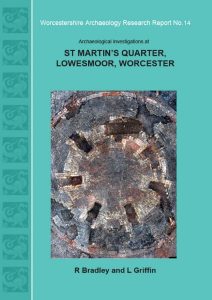
Report 14- Archaeological investigations at St Martin’s Quarter, Lowesmoor, Worcester
Excavations on a large area to the east of City Walls Road, Worcester, uncovered extensive archaeological remains, which when combined with documentary and historical research has produced a wide-ranging study of the Silver Street/Lowesmoor suburb, especially from the 13th century onwards. Discoveries including a Roman road, tile kilns, pipe kilns, Civil War bastion, and the site of Grainger’s porcelain works.
Monographs
Mann, A, and Jackson, R, 2018 Clifton Quarry, Worcestershire. Pits, posts and cereals: Archaeological Investigations 2006-2009, Oxbow Books: Oxford
Hurst, D. (ed) 2017 Westward on the high-hilled plains; the later prehistory of the West Midlands, Oxbow
Jackson, R. 2015 Huntsman’s Quarry, Kemerton: A Late Bronze Age settlement and landscape in Worcestershire, Oxbow
Jackson, R. 2012 Ariconium, Herefordshire: An Iron Age Settlement and Romano-British ‘Small Town’, Oxbow
Jackson, R. & Miller, D. 2011 Wellington Quarry, Herefordshire (1986-96): Investigations of a landscape in the Lower Lugg Valley, Oxbow
Hurst, D. (ed) 2006 Roman Droitwich: Dodderhill fort, Bays Meadow villa and roadside settlement, CBA Research Report, No.146
Dalwood, H. & Edwards, R. 2004 Excavations at Deansway, Worcester, 1988-89: Romano-British small town to late medieval city, CBA Research Report, No.139
Hurst, D. (ed) 1997 A multi-period salt production site at Droitwich: excavations at Upwich, CBA Research Report, No.107
Woodiwiss, S. (ed) 1992 Iron Age and Roman salt production and the medieval town of Droitwich, CBA Research Report, No.81






